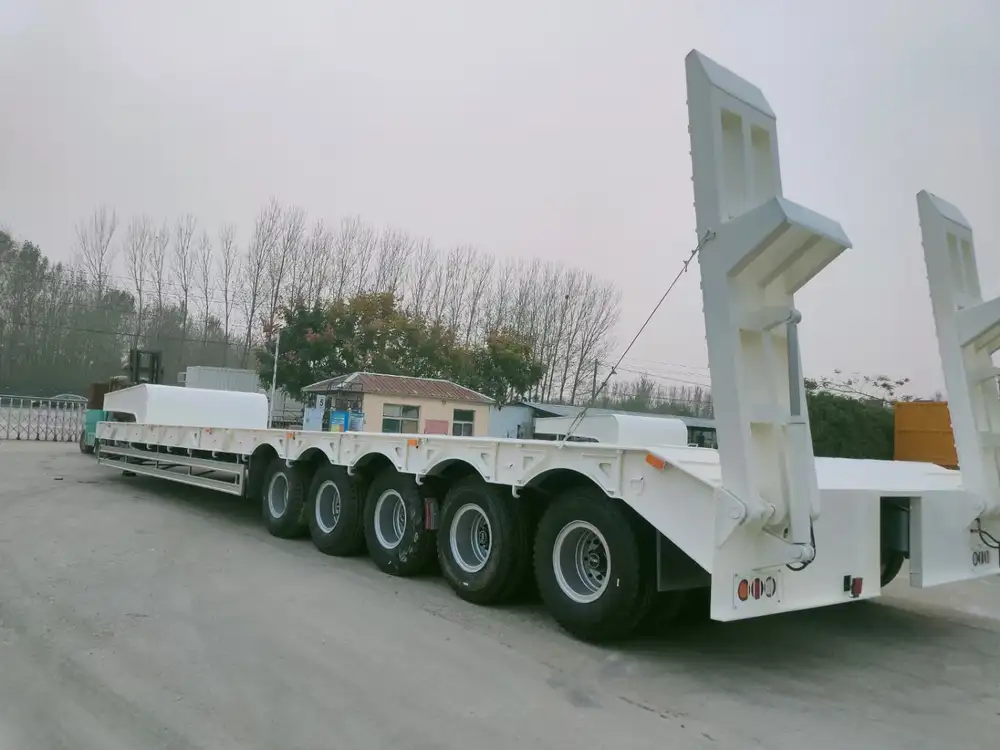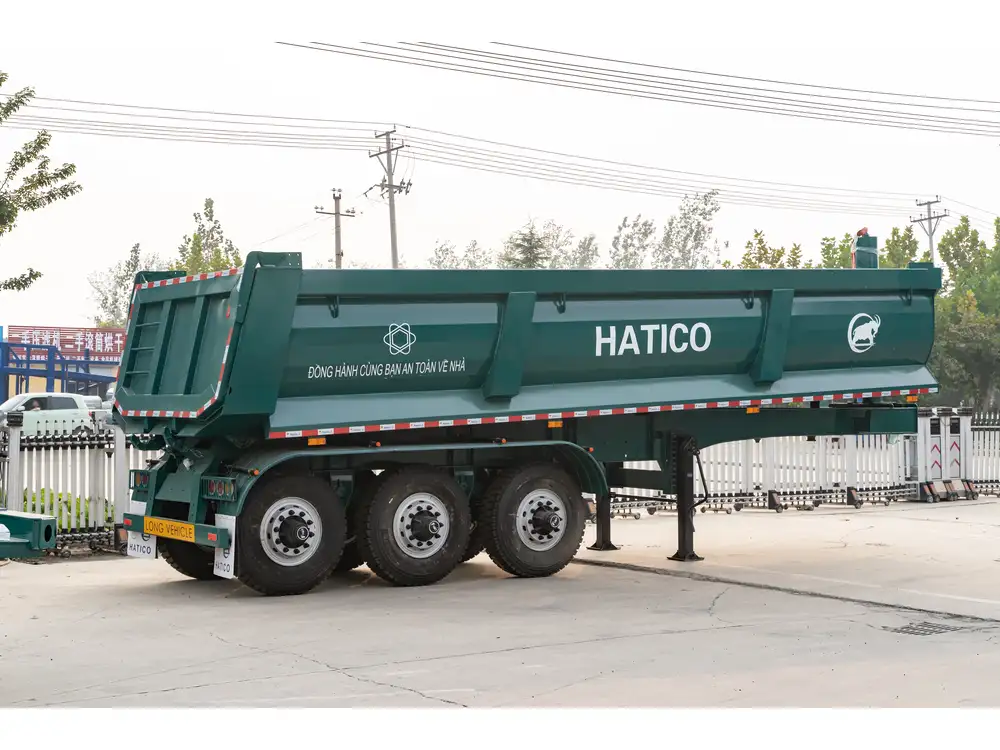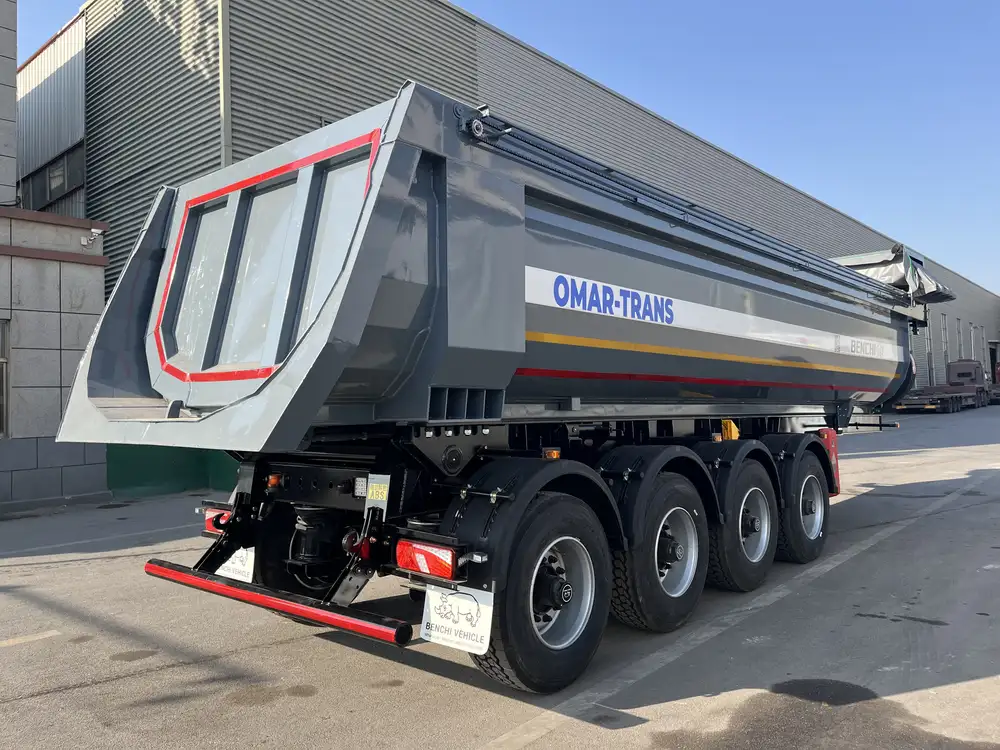Navigating the world of transportation equipment can be challenging, especially when it comes to understanding specialized trailers. A prominent solution for various freight transport needs is the 48-foot flatbed Conestoga trailer. This article delves into the intricacies of this trailer type, its specifications, applications, and advantages, structured to provide clarity and detail for manufacturers, logistics companies, and end-users.
What is a Flatbed Conestoga Trailer?
Definition and Structure
A flatbed Conestoga trailer is an advanced flatbed design equipped with a unique tarping system. Unlike conventional trailers, which often rely on simple tarps, the Conestoga system features a series of flexible, retractable side panels and a roll-top cover that can be deployed or stowed easily. This innovation enables efficient loading and unloading while providing protection against harsh weather conditions.

Key Components
| Component | Description |
|---|---|
| Flatbed Base | A flat, open platform for loading various freight. |
| Conestoga Cover System | A flexible cover that rolls back to allow access. |
| Side Panels | These panels provide additional protection and are adjustable. |
| Tie-Down Points | Strategically placed to ensure secure freight transport. |
| Chassis | The trailer frame that supports the overall structure. |
Dimensions and Specifications
Standard Measurements
The standard length of a Conestoga trailer is 48 feet, with a width of approximately 102 inches. The height can vary depending on the freight but typically stands around 13.5 feet when fully loaded. Here’s a breakdown of its specifications:
| Specification | Measurement |
|---|---|
| Length | 48 feet |
| Width | 102 inches |
| Height | 13.5 feet |
| Weight Capacity | Up to 48,000 lbs |

Material Construction
Flatbed Conestoga trailers are commonly constructed from durable materials like steel or aluminum, offering a balance between strength and weight.
Applications of 48-Foot Flatbed Conestoga Trailers
Versatility in Freight Transport
The 48-foot flatbed Conestoga trailer is especially valued in industries requiring frequent loading and unloading of goods. Its flexible design caters to:
- Construction Materials: Ideal for transporting lumber, steel beams, and other construction supplies.
- Automotive Parts: Often used to move large automotive components or machinery.
- Heavy Equipment: Suitable for hauling oversized loads that can be accommodated on a flat platform.
- Consumer Goods: Efficient for transporting goods that demand a degree of weather protection without hindering accessibility.

Seasonal and Regional Considerations
In regions experiencing seasonal weather changes, the Conestoga cover proves invaluable. Companies transporting goods across different climates can ensure that their freight remains unaffected by rain, snow, or excessive sun exposure.
Benefits of Using 48-Foot Flatbed Conestoga Trailers
Enhanced Load Management
The most distinguishing feature of a Conestoga trailer is its superior load management capabilities. The retractable cover allows for easy access during loading and unloading, reducing the time spent on-site and increasing operational efficiency.

Weather Protection
Goods transported in open flatbed trailers are vulnerable to environmental factors. The Conestoga system mitigates this concern by providing a protective cover, which not only keeps freight secure from rain and wind but also shelters it from direct sunlight, reducing the risk of heat-related damage.
Increased Security
With multiple tie-down points and the added layer of cover, these trailers provide enhanced safety for cargo. This security is particularly important for high-value freight, reducing the risk of theft or damage during transit.
Comparison with Other Trailer Types

Flatbed vs. Conestoga vs. Enclosed Trailers
To offer a deeper understanding, let’s compare the flatbed Conestoga with other common trailer types:
| Feature | Flatbed Truck | Flatbed Conestoga | Enclosed Trailer |
|---|---|---|---|
| Protection from Elements | Minimal | High (with cover) | Complete (fully enclosed) |
| Loading Efficiency | High (open design) | High (flexible cover) | Moderate (requires access doors) |
| Weight Capacity | Varies (up to 48,000 lbs) | 48,000 lbs or more | Lower due to structure |
| Ideal Cargo Types | Heavy machinery, lumber | Various freight, seasonal goods | Delicate items, electronics |
When to Choose Each Trailer Type
Selecting the appropriate trailer largely depends on the specific needs of your freight. Use the table above to make an informed decision:
- Flatbed Trucks are excellent for heavy machinery or bulk materials.
- Flatbed Conestogas are ideal when weather protection and loading efficiency are paramount.
- Enclosed Trailers are best for transporting sensitive or fragile items.
Key Considerations for Purchasing a 48-Foot Flatbed Conestoga Trailer

Budget Constraints
Investing in a trailer requires a detailed understanding of your budget. Conestoga trailers may have a higher upfront cost than traditional flatbeds due to their advanced engineering and features. However, the long-term benefits often outweigh initial expenses.
Maintenance Costs
Regular maintenance is essential for sustaining trailer performance and safety. Here’s a quick rundown of what to consider:
- Tarp System Checks: Ensure that the rolling and retracting mechanism functions smoothly.
- Structural Inspections: Regularly examine the trailer for signs of wear, especially on the chassis and support beams.
- Tire and Brake Checks: Maintaining proper tire pressure and brake functionality is crucial for safety.
Regulatory Compliance
Ensure your trailer adheres to local and federal transportation regulations. Familiarize yourself with weight limits, safety requirements, and any restrictions pertaining to freight types.

Enhancing Fleet Efficiency with 48-Foot Flatbed Conestoga Trailers
Streamlining Operations
Investing in a fleet of 48-foot flatbed Conestoga trailers can significantly enhance operational efficiency. With reduced loading times and excellent cargo protection, businesses can ensure faster turnaround times and improved customer satisfaction.
Flexible Fleet Management
The adaptability of Conestoga trailers allows for varied freight types without needing to switch out equipment constantly. This flexibility can contribute to lowering operational costs and increasing profit margins.

Maintenance Tips for Longevity
To maximize the lifespan of your Conestoga trailer, consider these maintenance tips:
Regular Inspections
- Monthly Checks: Conduct routine visual inspections for wear and tear.
- Quarterly Maintenance: Schedule professional assessments to examine critical components.
Cleaning and Care
Keeping your trailer clean prevents rust and degradation:
- Wash the exterior regularly to remove dirt and debris.
- Inspect the tarp system and side panels for any tears or damages.

Proper Loading Techniques
Follow best practices for loading to avoid undue stress on the trailer:
- Distribute Weight: Ensure the weight is evenly distributed across the flatbed.
- Secure Cargo Effectively: Use appropriate tie-down techniques to prevent load shifting.
Conclusion
The 48-foot flatbed Conestoga trailer presents a versatile and effective solution for various freight transport needs. Its unique design facilitates efficient loading and unloading while providing critical protection against the elements. Companies considering an investment in this trailer type will benefit significantly from its adaptability, enhanced security, and overall operational efficiency.
In today’s competitive logistics landscape, leveraging such advanced equipment equips businesses with the tools necessary to meet customer demands and excel in their respective markets. Each consideration—from budget and maintenance to regulatory compliance—plays a pivotal role in maximizing the benefits of this exceptional trailer type.
In summary, whether for transporting construction materials, automotive parts, or goods that require careful handling, the 48-foot flatbed Conestoga trailer stands as a powerful asset, ready to meet the challenges of modern freight transport.



